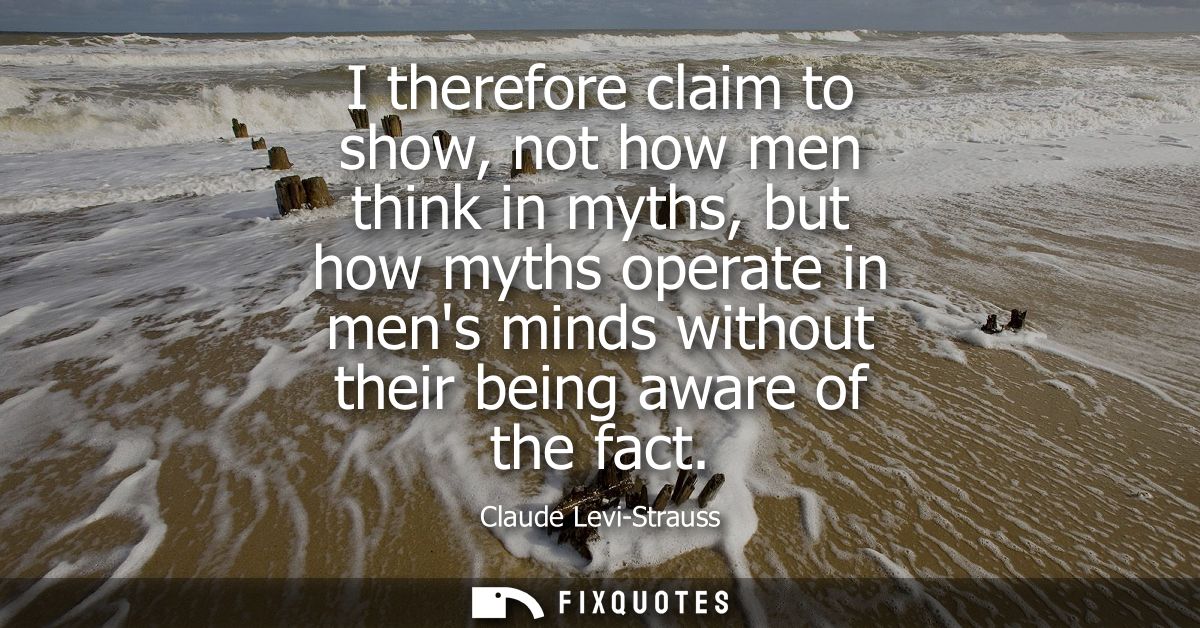"I therefore claim to show, not how men think in myths, but how myths operate in men's minds without their being aware of the fact"
About this Quote
Claude Lévi-Strauss highlights a key distinction between conscious human thought and the deeper, often unconscious mechanisms by which myths influence human perception and understanding. He suggests that myths are not merely the product of intentional creative human activity; rather, they are active structures that shape thought processes beneath the level of conscious awareness. Myths are living systems within cultures, shaping beliefs, relationships, and social codes independently of any deliberate choice by individuals.
Rather than viewing myths as static narratives consciously invented and retold by people, Lévi-Strauss positions them as dynamic agents with their own logic and rules, operating within the human mind, altering interpretation, affecting behavior, and guiding collective meanings. Myths provide patterns of thought, binary oppositions, metaphors, and archetypes that structure experience and guide responses to the world. Individuals frequently absorb these mythic structures and act through them without reflection or realization, believing their interpretations and behaviors to be entirely rational, personal, or original.
Lévi-Strauss also implies that the power of myth does not lie solely in its content but in its function: how it connects disparate ideas, reconciles contradictions, and offers resolution to complex cultural dilemmas. Myths take on a life of their own, transcending the intentions of any single storyteller or listener. As cultural constructs, they mold the organization of knowledge and shape social realities, providing communities with frameworks for interpreting experience, classifying the world, and justifying customs and institutions. Thus, myths "operate" in the sense that they are active processes within the mind, organizing, categorizing, and mediating meaning.
Lévi-Strauss’s perspective shifts the anthropological focus from the creators of myth to the autonomous logic of the mythic system itself. He invites us to recognize and investigate these subtle forces, encouraging awareness of the ways in which collective narratives invisibly orchestrate human thought and society.
More details
About the Author

